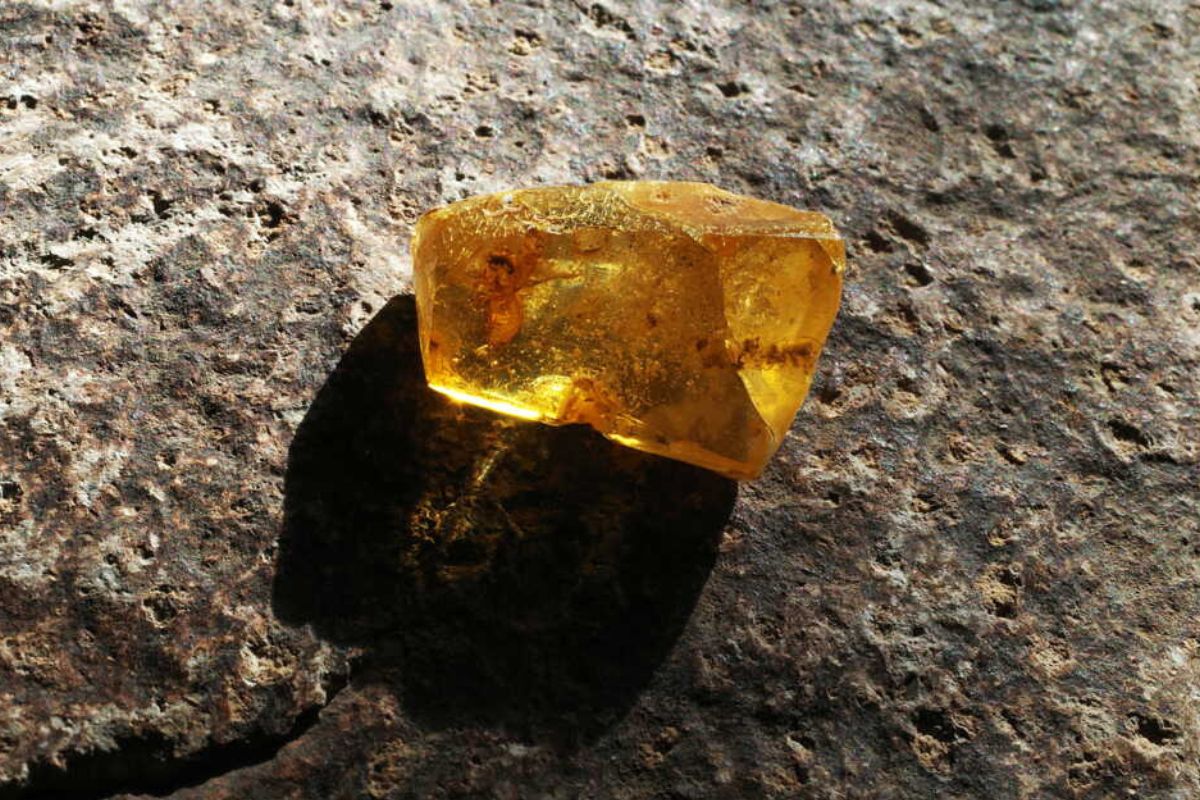Show table of content Hide table of content
Ancient geological mysteries continue to captivate scientists worldwide, offering glimpses into Earth’s tumultuous past. Recently, researchers made a groundbreaking discovery that has revolutionized our understanding of prehistoric natural disasters. Within amber deposits found in northern Japan, scientists have identified evidence of a massive tsunami that occurred approximately 115 million years ago, during the early Cretaceous period when dinosaurs still roamed the Earth. This remarkable finding provides an unprecedented window into catastrophic events from deep time.
Amber as a time capsule for ancient tsunami evidence
The discovery, published in Scientific Reports, reveals how amber—fossilized tree resin—can preserve evidence of cataclysmic events. Japanese researchers examining amber samples from the Shimonakagawa quarry in Hokkaido identified unique deformation patterns that told an extraordinary story. These specimens showed characteristic “flame structures,” indicating rapid transport from land to ocean depths without exposure to air.
Unlike traditional tsunami indicators such as sedimentary deposits or geological formations, amber provides exceptional preservation of fine details. This remarkable property has previously captured ancient insects and plant materials, much like the historical artifacts sometimes preserved and disputed for decades in human society. The amber tsunami discovery represents a scientific first—using fossil resin to identify prehistoric tsunamis.
Dr. Aya Kubota, paleontologist at Tokyo’s Chuo University and study co-author, emphasizes the significance: “Typically, amber research focuses on trapped organisms. However, examining the resin’s sedimentation patterns offers unique insights into past geological processes, particularly catastrophic events like tsunamis.”
Through fluorescence imaging—exposing amber to ultraviolet light to reveal internal structures—researchers documented compelling evidence that these samples were rapidly transported from coastal forests to deep marine environments by powerful tsunami waves. The preservation quality allows scientists to distinguish between tsunami deposits and those created by severe storms, a historically challenging differentiation.
Deciphering the 115-million-year-old disaster
The amber deposits tell a dramatic story of sudden catastrophe. When tsunamis struck ancient Japanese coastlines, they tore through forests, carrying trees and their fresh resin directly into the ocean. This rapid burial in marine sediments protected the amber from oxidation and degradation, preserving the moment of disaster like a geological snapshot.
Supporting evidence reinforces the tsunami hypothesis. Contemporaneous landslides, possibly triggered by earthquakes, disrupted seafloor sediments. Researchers also identified numerous tree trunks embedded in seafloor deposits—further indicating rapid mass transport rather than gradual accumulation of organic material.
Science This strange red lake in Tanzania turns animals to ‘stone’.
The research team combined detailed field observations with advanced laboratory analyses to build their case. While initially puzzling, the unusual amber characteristics eventually pointed clearly toward tsunami activity as the most plausible explanation. This meticulous scientific detective work reveals how natural disasters shaped ancient landscapes in ways similar to geological processes we can observe in protected natural areas today.
This fossilized tsunami occurred during a period of intense tectonic activity in what would eventually become the Japanese archipelago. The scale of the event likely dwarfed many modern tsunamis, though perhaps not reaching the heights of the largest ever recorded at over 500 meters high.
Revolutionary techniques unveil prehistoric catastrophes
The innovative methods employed in this research represent a significant advancement in paleotsunamology—the study of ancient tsunamis. Traditional approaches rely heavily on sedimentary deposits and geological formations, which often prove difficult to interpret conclusively. By introducing amber analysis to the tsunami researcher’s toolkit, scientists gain a powerful new method for distinguishing between various types of catastrophic events.
Fluorescence imaging played a crucial role in this discovery. By capturing images while exposing amber samples to ultraviolet light, researchers revealed internal structures impossible to see with conventional methods. These techniques allowed scientists to identify the distinctive flame patterns characteristic of rapid marine transport.
The implications extend beyond tsunami research. This methodological breakthrough demonstrates how unexpected materials can preserve evidence of ancient events. Much like how unexpected discoveries sometimes come from unlikely sources, these amber samples provided insights no one anticipated.
Scientists now plan to examine amber deposits worldwide, searching for similar tsunami signatures. This could revolutionize our understanding of prehistoric disaster frequency and intensity, particularly in geologically active regions. The research also highlights how cross-disciplinary approaches—combining geology, paleontology, and advanced imaging—can unlock secrets previously hidden in plain sight.
Future insights from fossilized catastrophes
This remarkable discovery opens exciting new research avenues for understanding Earth’s dynamic history. By establishing amber as a reliable tsunami indicator, scientists gain a valuable tool for reconstructing prehistoric disaster chronologies. This expanded knowledge helps contextualize modern tsunami risks within Earth’s long-term patterns.
The preservation quality of amber provides unprecedented detail about ancient environmental conditions during and immediately after tsunamis. Each amber sample essentially functions as a time capsule, capturing a specific moment during one of nature’s most destructive phenomena. This level of detail helps scientists understand how ecosystems responded to and recovered from major disasters.
Science 50 years later, a quantum mystery has finally been solved.
Beyond scientific significance, this discovery reminds us how geological processes connect distant time periods. The same fundamental forces that shaped Earth 115 million years ago continue today. By studying ancient disasters, we gain perspective on modern environmental challenges and natural hazards.
As research techniques continue advancing, more secrets will likely emerge from this and similar amber deposits. The amber tsunami discovery demonstrates how scientific innovation can transform our understanding of Earth’s past, revealing stories previously hidden in stone and resin for millions of years.


